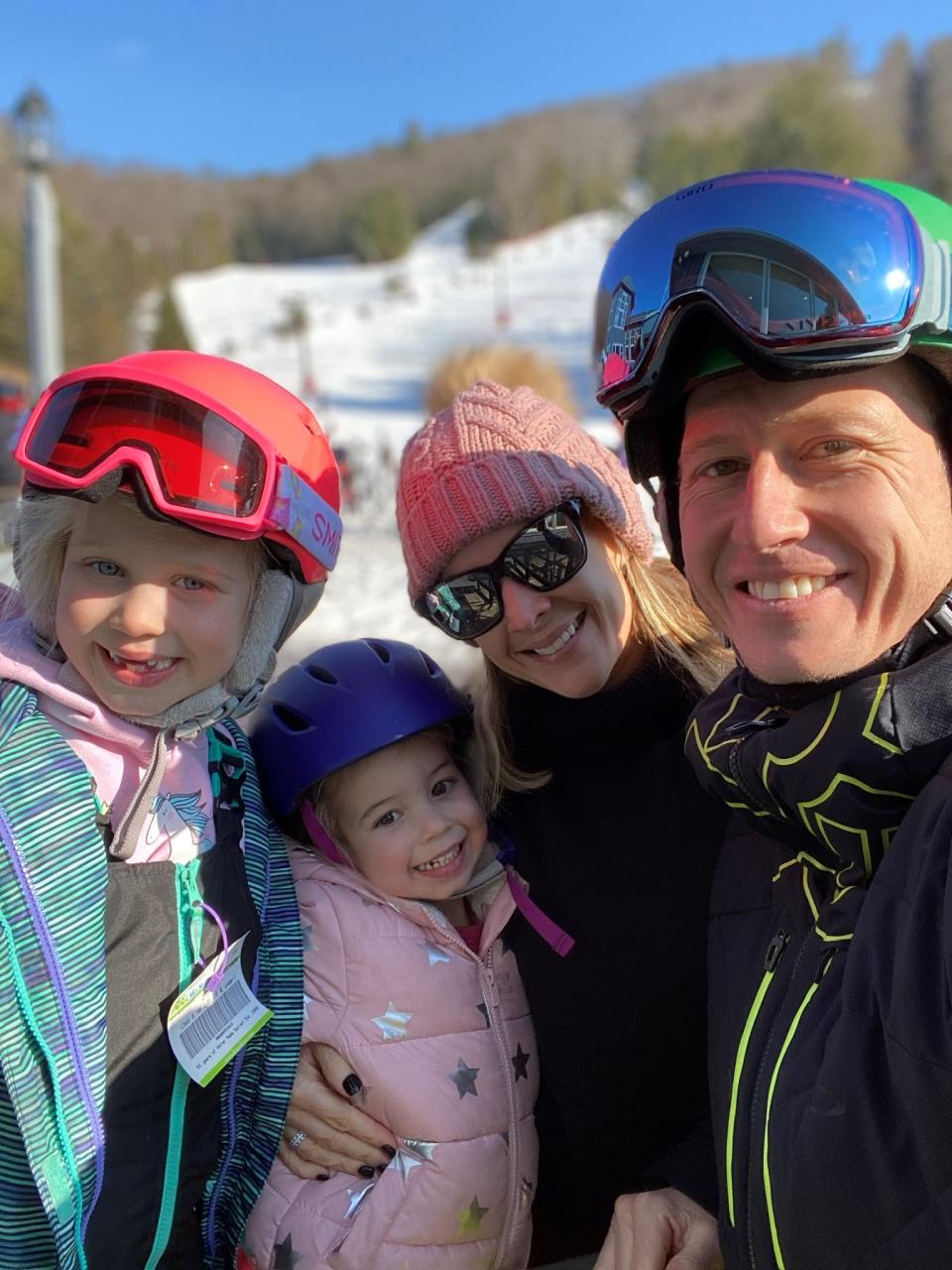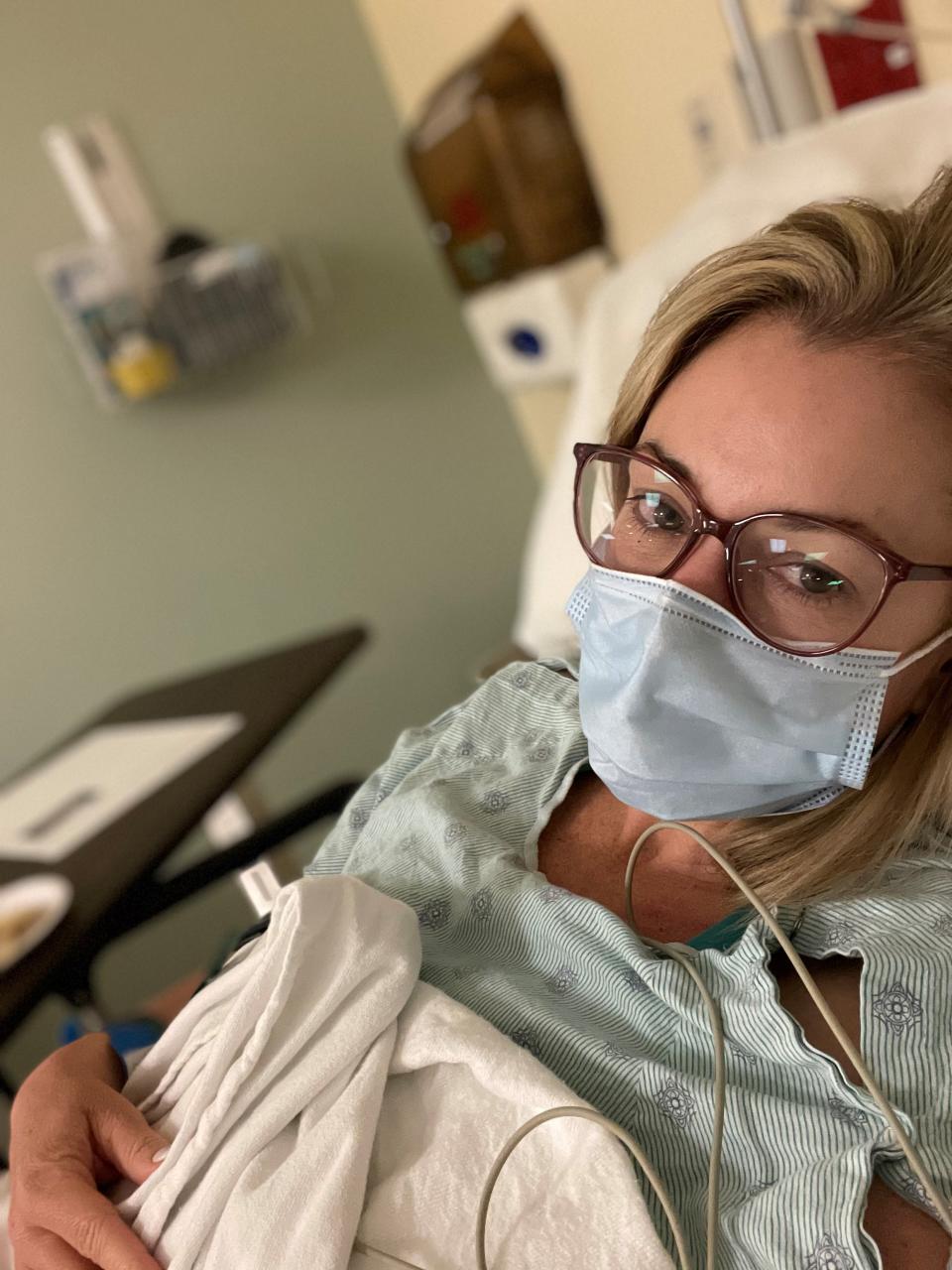I’ve Had More Miscarriages Than I Can Count. And I Want to Talk About It
“Why is this happening again? I’m losing my baby and I can feel it.” My thoughts while I miscarried in a porta potty while working in the field, right before going on camera…and no one knew.
As a little girl, I didn’t dream about being a mom. When I talked about the future, it was always work related because my aspirations were very career driven. But after I married my husband, things changed. He was the missing link between my life as I knew it and motherhood, and starting a family together felt right. As a couple, we began a decade-long journey filled with shame, embarrassment, loneliness, need, hope, losing hope, having hope again, and basically moving through life feeling both raw and exposed, and unseen at the same time. I’ve had more miscarriages than I can count—my body just couldn’t seem to keep a baby inside. Had we known how many couples struggle with infertility, we wouldn’t have felt so alone.
Roughly 10% of women in the U.S. have difficulty getting pregnant or staying pregnant. That is around 6.1 million women. With such a massive number experiencing fertility issues, it would seem the conversation would be louder. But so many of us have let shame silence us. It even keeps us from talking to those whom we consider our tribe and support system.
The truth is I had this picture of what I thought a woman in this position would look like. I think we all do. You never think it looks like you, but it does. It also looks like your neighbor or the couple in the park walking their dog, and even the one with kids in the grocery store. It doesn’t have a type or social status and it affects everyone who is involved, both men and women. And the isolation can be overwhelming. We move invisibly through the world with nothing to connect us except the occasional heavily coded conversations with shared statements like...
We’ve been trying.
We’ll see what happens.
It hasn’t been going well.
Yes, we want kids. It just hasn’t happened yet.
This exchange causes our hidden pain to perk up because it’s found a battle buddy who gets it. And for a moment we lift the mask a bit to bare our matching wounds to each other.
Making a decision to start a family is already such a personal step, but when you can’t do what you figure your body was created to do (and are frequently bombarded with questions of when you’re going to start a family), you fold inside yourself and hide from the world. Even after birthing Finely, our now 7-year-old, we continued to struggle. The joy we experienced from her birth, although long awaited and deeply desired, wasn’t a replacement for all the losses we’d had and the ones we had yet to endure.

Being an ESPN SportsCenter anchor and having my face seen by millions means I’ve had to fortify my mask to stay hidden. Once I was late for work after having a miscarriage that morning. I’d made up an irresponsible excuse and was subsequently reprimanded. But they had no idea, and the excuse was easier than the truth. I just couldn’t bring myself to say it. There have been countless times I’ve had to wipe my tears, fix my makeup, and push aside the pain of actually feeling my body reject my baby. I focused on doing my job while keeping those close to me at a distance with the thought that I was protecting them from my pain. Although they supported me, I knew they couldn’t relate.
After my most recent miscarriage, which was my final one because it was my last egg, I’ve decided to publicly share my struggles. After this last attempt and failure, I was devastated and have never felt more alone. So I’m not just speaking up for solidarity, but for the changes that need to happen within this unique community. If you haven’t lived it, you don’t know what it’s like.
The average cost for fertility treatments (called IVF cycles) in the U.S. are between $10,000 and $15,000, with an additional $1,500 to $3,000 for medications per cycle. This alone keeps a large percent of the infertile population from moving forward with certain procedures because it would be a financial burden. And there’s still no guarantee it will work by the end of the cycle. Some who have sacrificed their life savings or accrued a second mortgage may not be able to afford trying again. These reproductive-rights issues shouldn’t exist.
In addition to the costs, fertility clinics are not set up as a nurturing environment. They are supposed to be a place where families can find compassion and most of all hope, but in reality, they are basically a cattle call. Number, egg, sperm. Zero emotional care. And with COVID, and having to go to doctor appointments alone, there is an extra layer of isolation added to the experience.

This week is National Infertility Awareness Week, a movement that encourages storytelling to empower and support one another by ensuring all voices of the infertility community are heard and understood. To help amplify the conversation, I’m partnering with Pregnantish and First Response Pregnancy for a campaign called This Is What Infertility Looks Like, that addresses the misconceptions people have about the medical issue of infertility, including who it affects. The campaign captures the important fact that infertility does not discriminate when it comes to race, religion, sexual orientation, socio-economic status, age, lifestyle, or other factors.
During these challenging years, I’ve learned that there is no right or wrong answer for how to process this journey and no one can put a timeline on personal grief. I don’t have to be the strongest in the room because it’s okay to cry and it’s okay to not be okay.
I am truly in awe every time I look at our two girls. My family is my home, and simply my everything. Looking at me, no one would know how much loss my husband and I have experienced to get here. But the moments of loss, guilt, and failure don’t have to be a solo journey if we would all connect. We can remove some of the questions and learn from each other, and possibly take some of the stress away while sharing the pain.
Originally Appeared on Glamour

